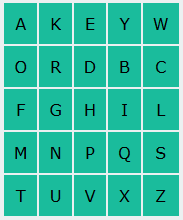Here is 22ac from Times crossword No 25109:
Shout aloud, crippled in cricket (4,4)
Like most clues, this one consists of a definition and some wordplay. The wordplay here is “shout aloud, crippled”, indicating the sound of the a word meaning “shout”, followed a (somewhat obscure) word meaning “crippled”. That’s relatively straightforward, but the definition in this clue is controversial in crosswording circles. It’s “cricket”, pointing to the answer BALL GAME, and it constitutes a so-called “definition by example”. That is to say, “cricket” is a particular instance of a ball game. Seems fair enough; why would anyone object to that? Well, if you think about it, that’s not how a definition usually works. A definition tells you what the thing it’s defining is, not what it merely might be. For some reason, it seems to be traditional to illustrate the distinction with the terms dog and Alsatian. So here is Collins’ definition of the latter:
a large wolflike breed of dog often used as a guard or guide dog and by the police
If we stripped all the qualifiers away, this would simply read “dog”. An Alsatian is a dog. Needless to say, the definition of dog does not begin “An Alsatian…”.
That’s the crux of the case against the ‘DBE’: it simply doesn’t tell the solver the truth about what the answer they’re looking for is.
Of course, insisting on a precise dictionary definition is pretty restrictive. Lots of cryptic clues have whimsical or otherwise oblique definitions – crosswords would be pretty dry without them. And even for a dictionary writer, going a bit more specific can help. Here’s Collins’ definition for business:
a commercial or industrial establishment, such as a firm or factory
Giving examples can help to firm up the definition. This is also how you might define a word informally. “What’s a reptile?” “Oh you know, like a snake or an iguana.” It’s certainly more helpful than diving straight into the Linnaean classification system. And if this is a valid way of defining things for dictionaries and in everyday speech, how can it possibly be wrong in a crossword clue? Indeed, many wholly uncontroversial clues have example-based definitions. But crucially, they include qualifying words: “such as a firm or factory”, “like a snake or an iguana”. If someone asks you what a reptile is and you flatly answer “a snake or an iguana”, that’s not helpful at all. It’s just wrong, and will cause all sorts of trouble when that person finds themselves in the herpetology department trying to classify a gecko. So if you want to define a word in a cryptic clue by giving an example of it, it’s the done thing to include a “such as” or a “perhaps” or at least a question mark. Nobody disagrees with a definition like that. The argument is about the unindicated DBE, like the one in the clue at the start of this post.
And yet that clue is surely perfectly solvable. Thousands of people will have got it when it was published, and few of them will have looked at “cricket” in the clue and BALL GAME written in the boxes and considered anything much was up. And there’s the debate. Formal correctness versus pragmatic solvability. Crossword titan Don Manley in Chambers Crossword Manual callse the DBE ‘false generalization’, and flatly describes it as an inaccurate definition, comparable to one indicating the wrong part of speech. But Sunday Times crossword editor Peter Biddlecombe (who allows unindicated DBEs in the paper’s clue-writing competition) as quoted at at Crossword Unclued, says
The insistence that “definition by example” must be indicated is, as far as I know, just a crossword convention. I can’t see external logic to support it […].
As I guess I’ve given away by now, I don’t agree with this. I think the external logic is pretty clear. The point of cryptic clues is to decieve the solver with ambiguous syntax, misleading context pointing to the wrong meanings of words, all the other tricks up the setter’s sleeve. But being tricked is no fun if the person doing the tricking isn’t playing fair. The least satisfying bits of cryptic clues are always the times when it feels like the setter isn’t relying on a normal use of language (albeit heavily disguised). It’s the abbreviations that no normal person has ever used. The references to obscure fish that are better known by crossword-solvers because of their helpful spelling than by biologists. And the definitions that fail to define the thing they’re defining.
